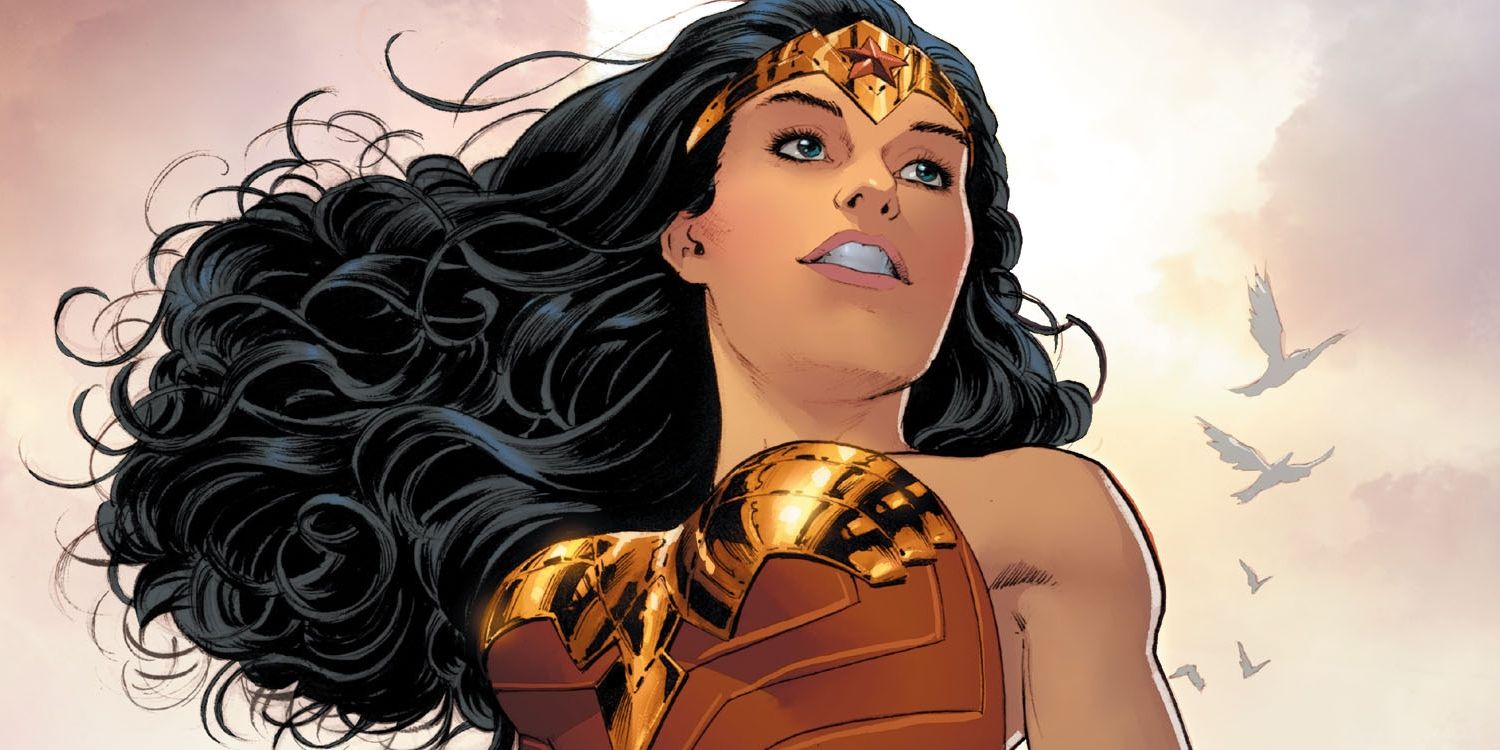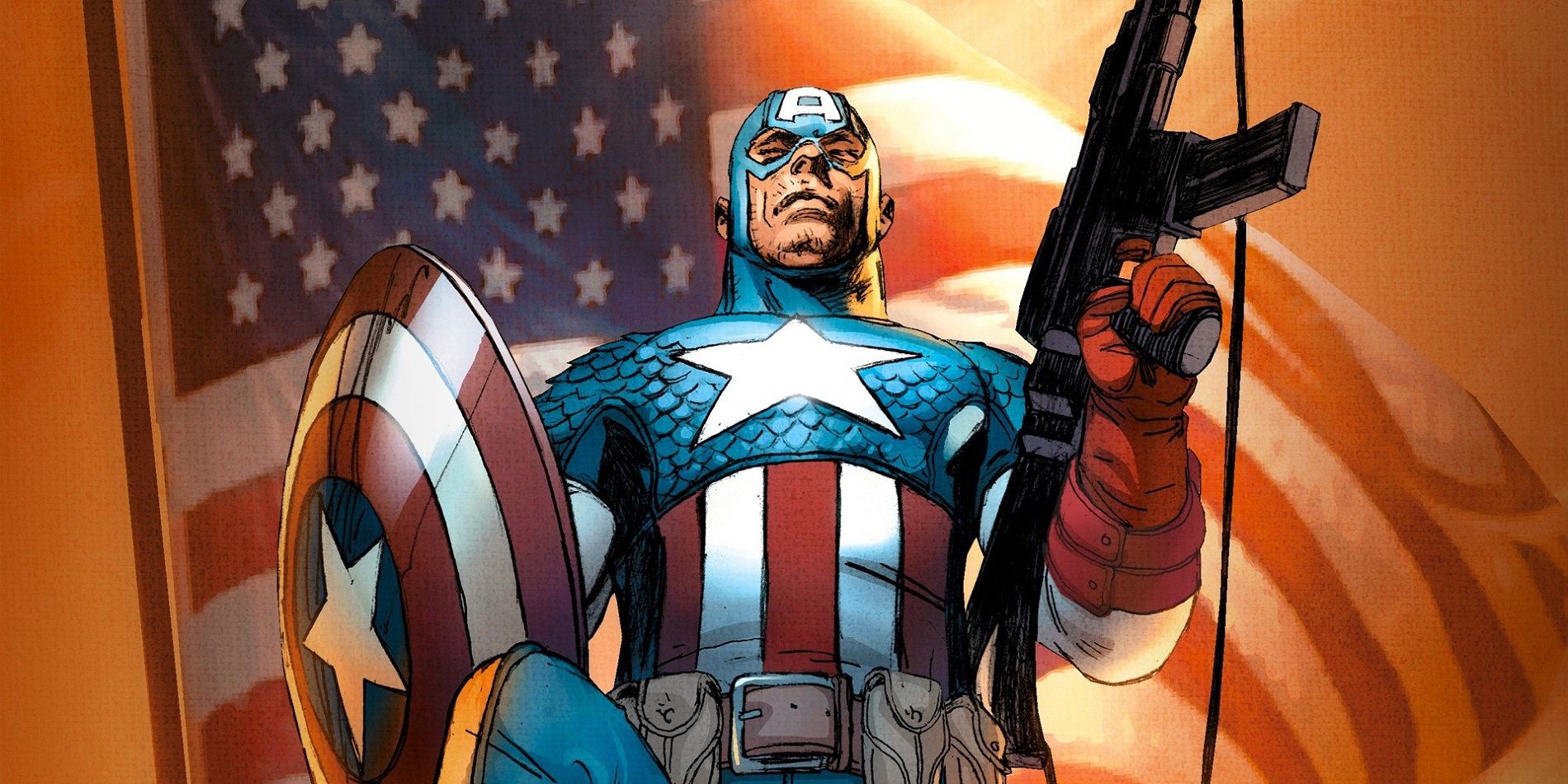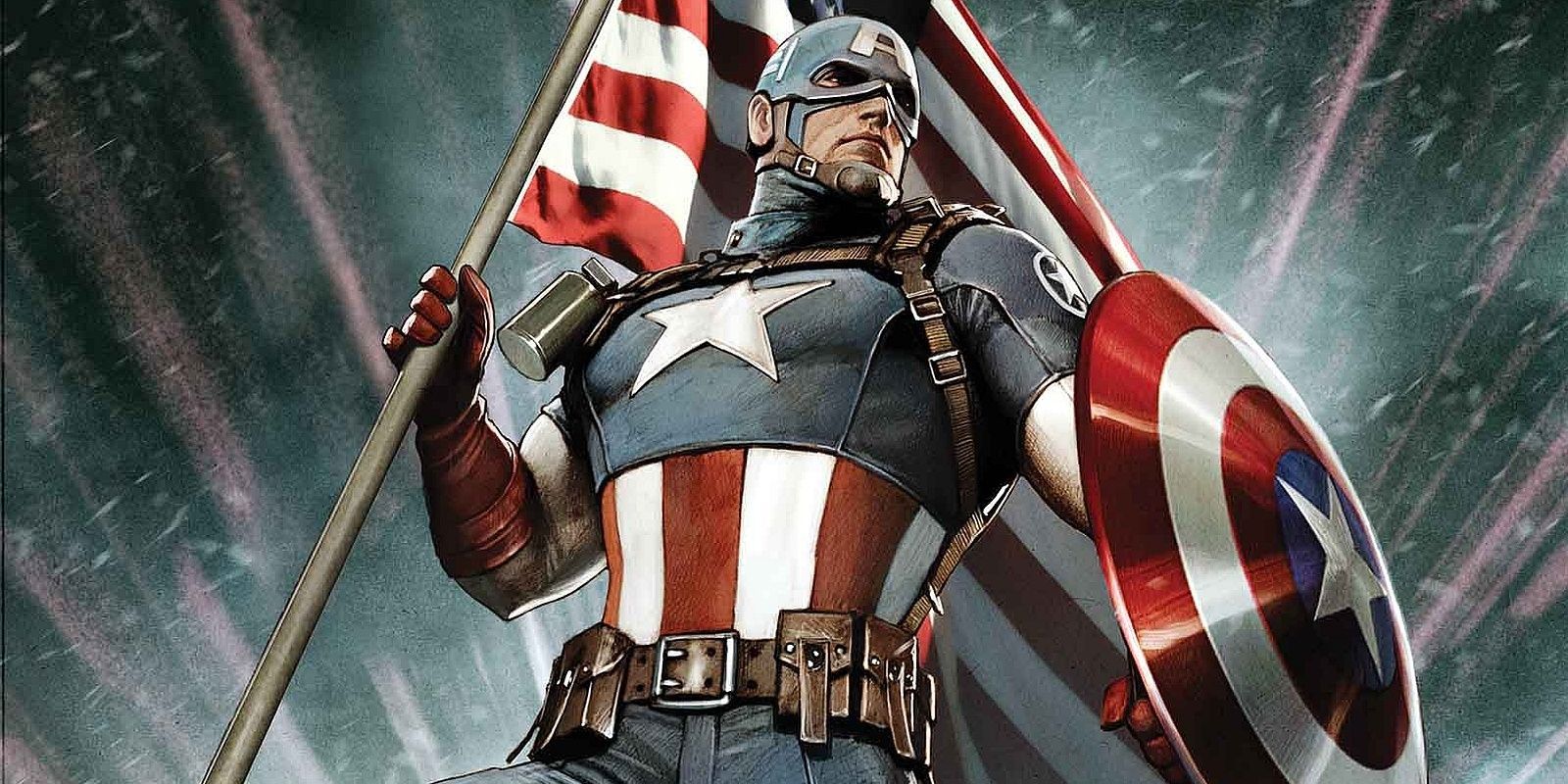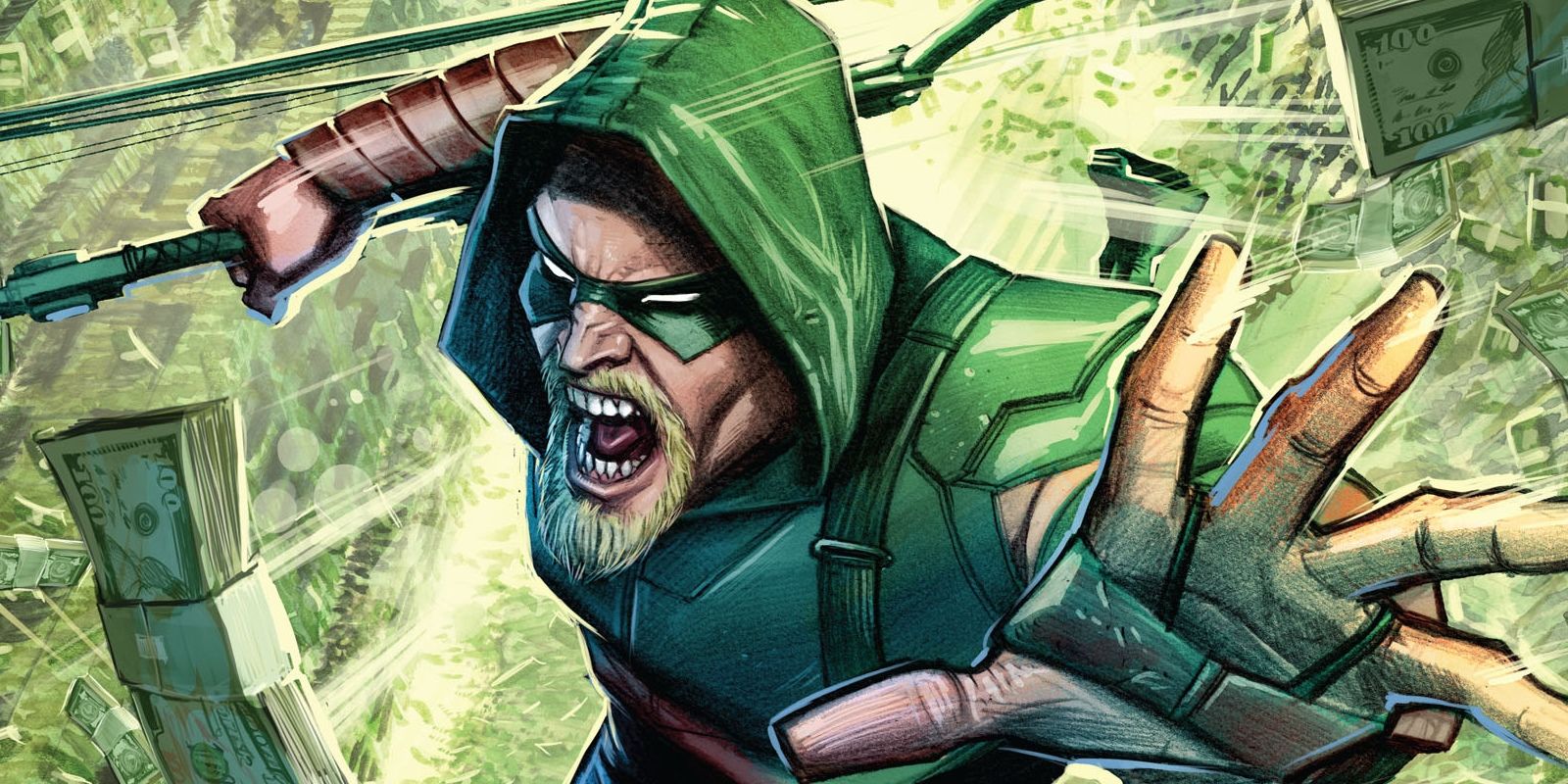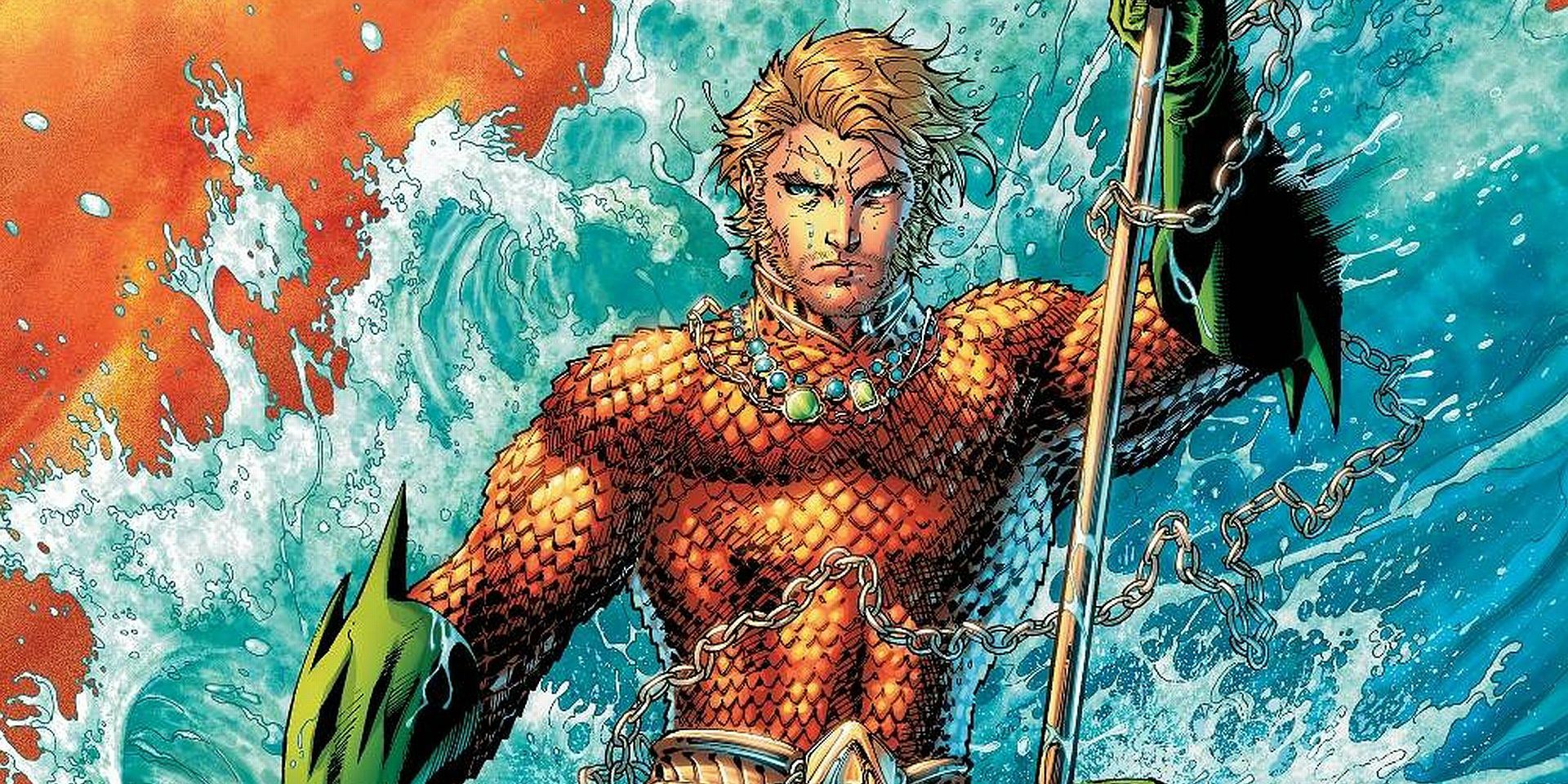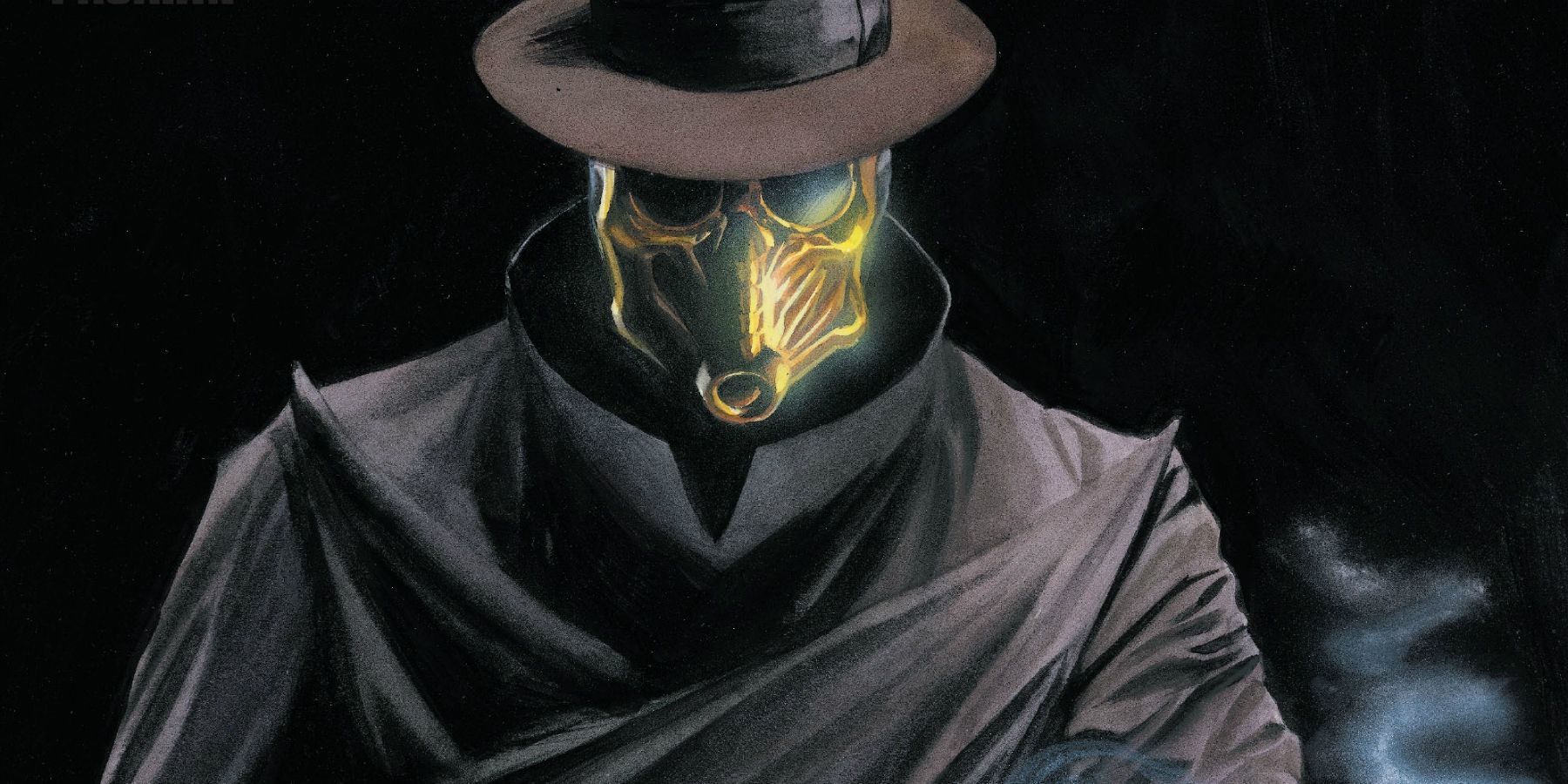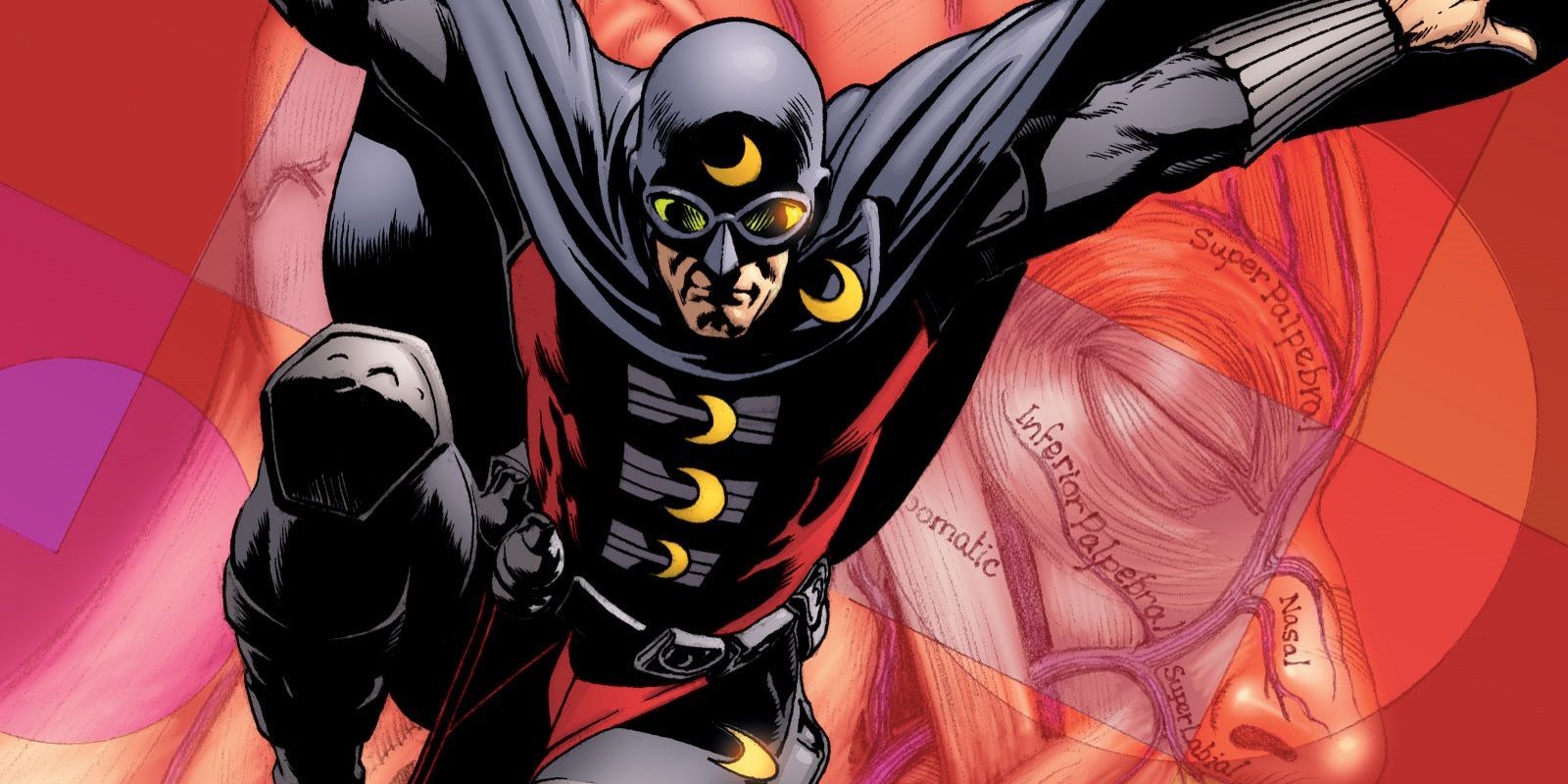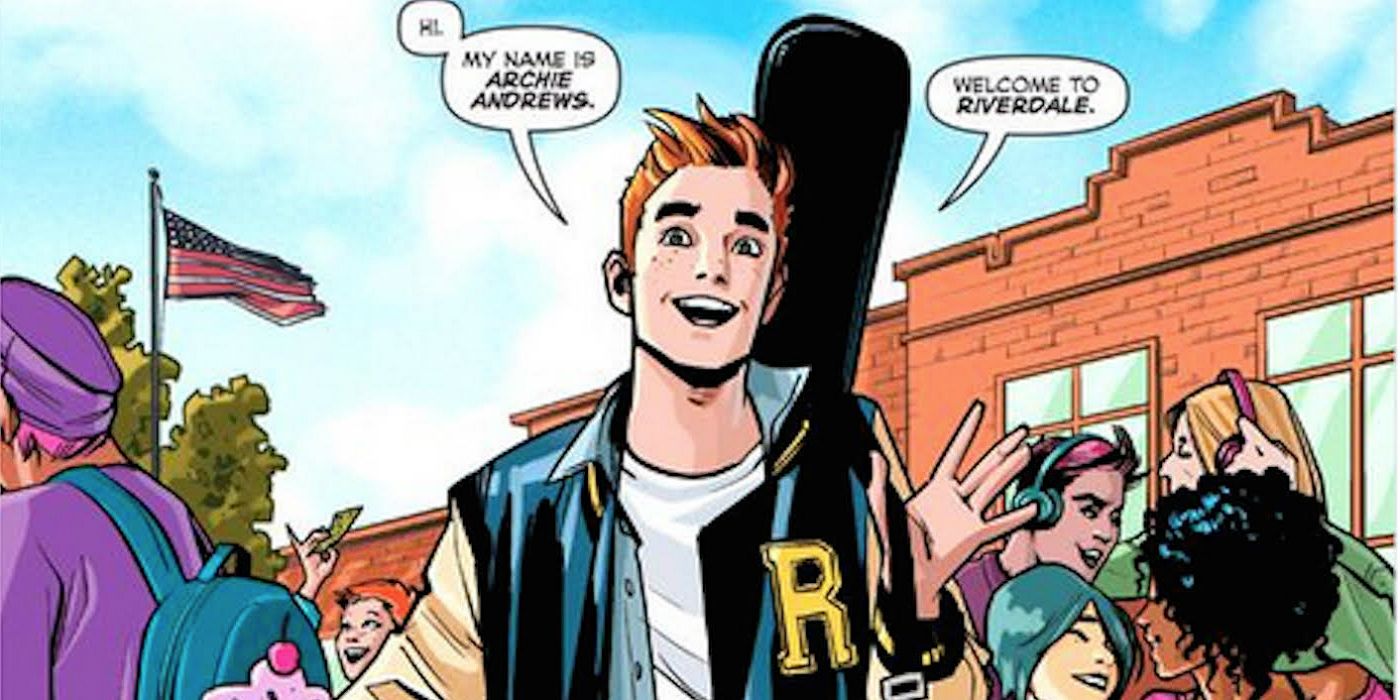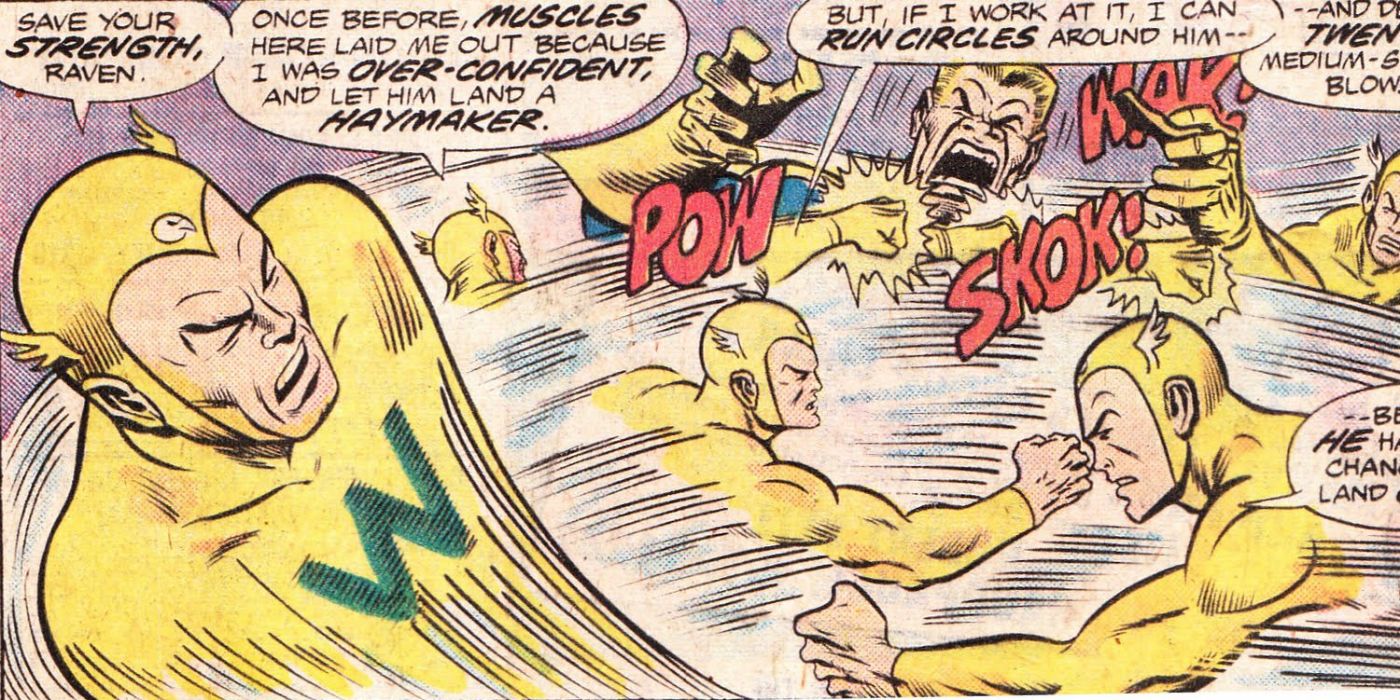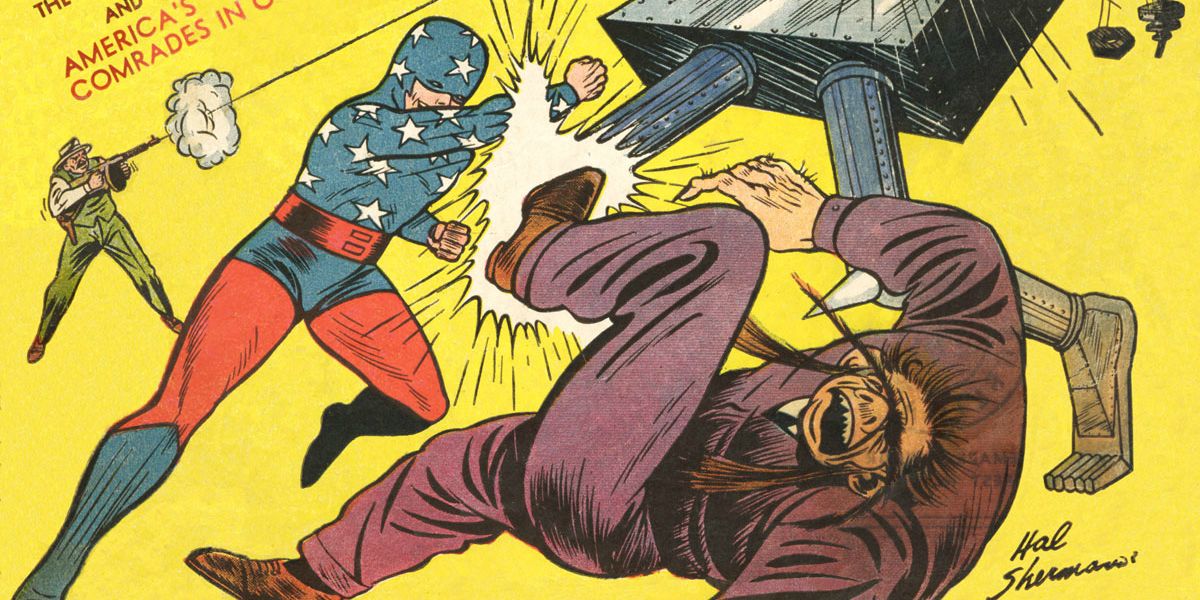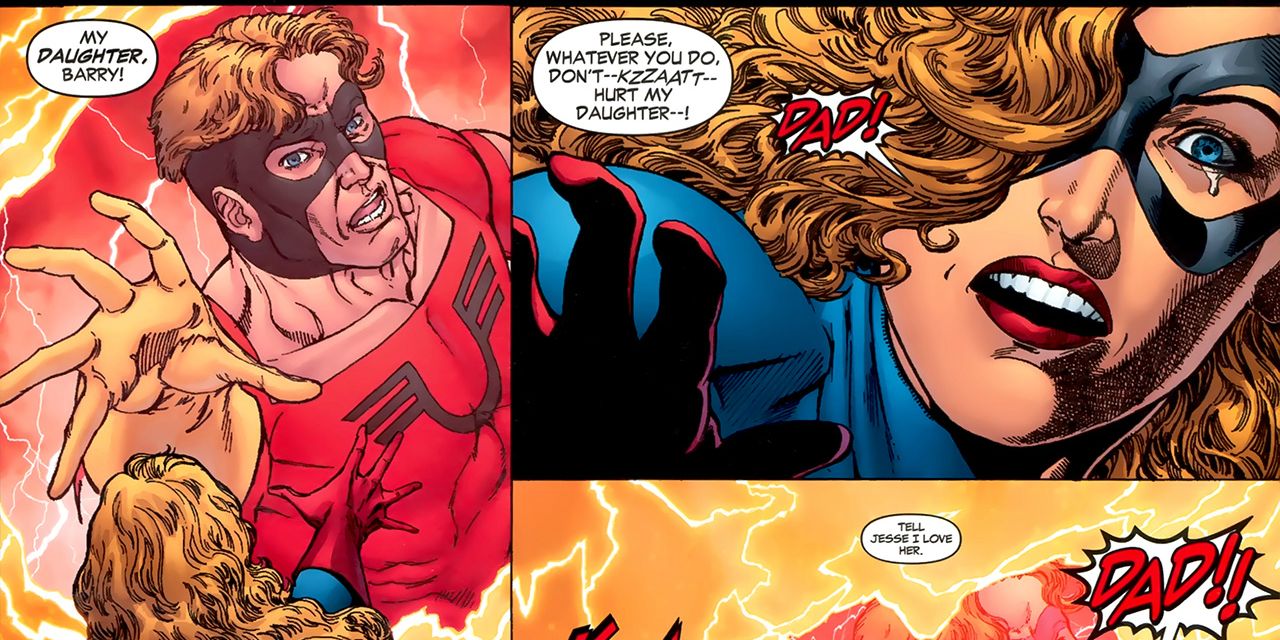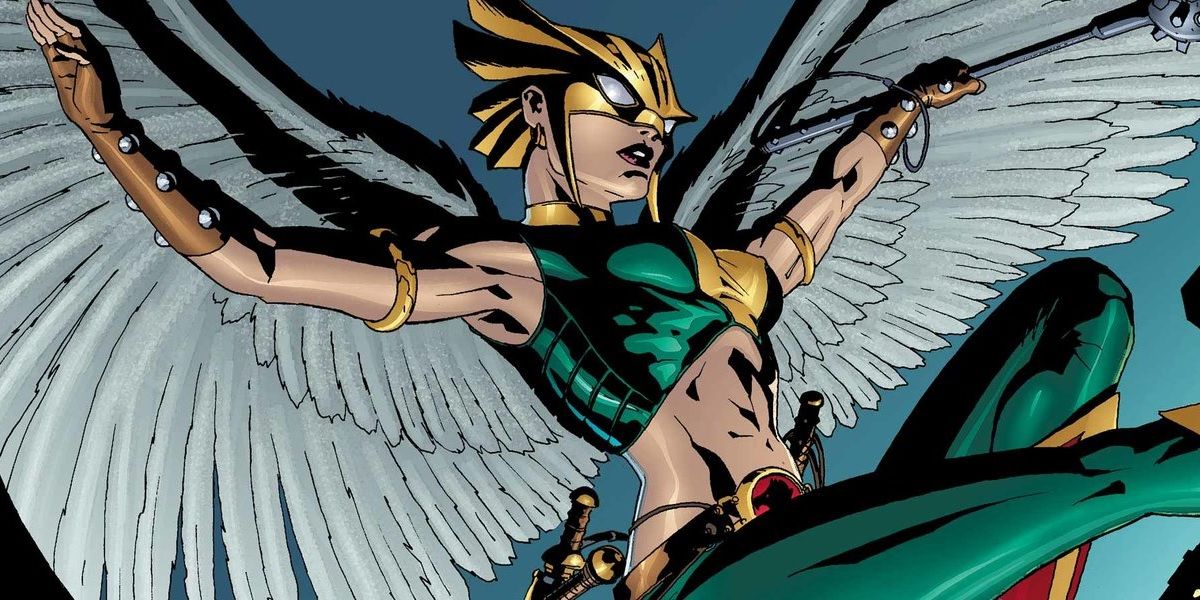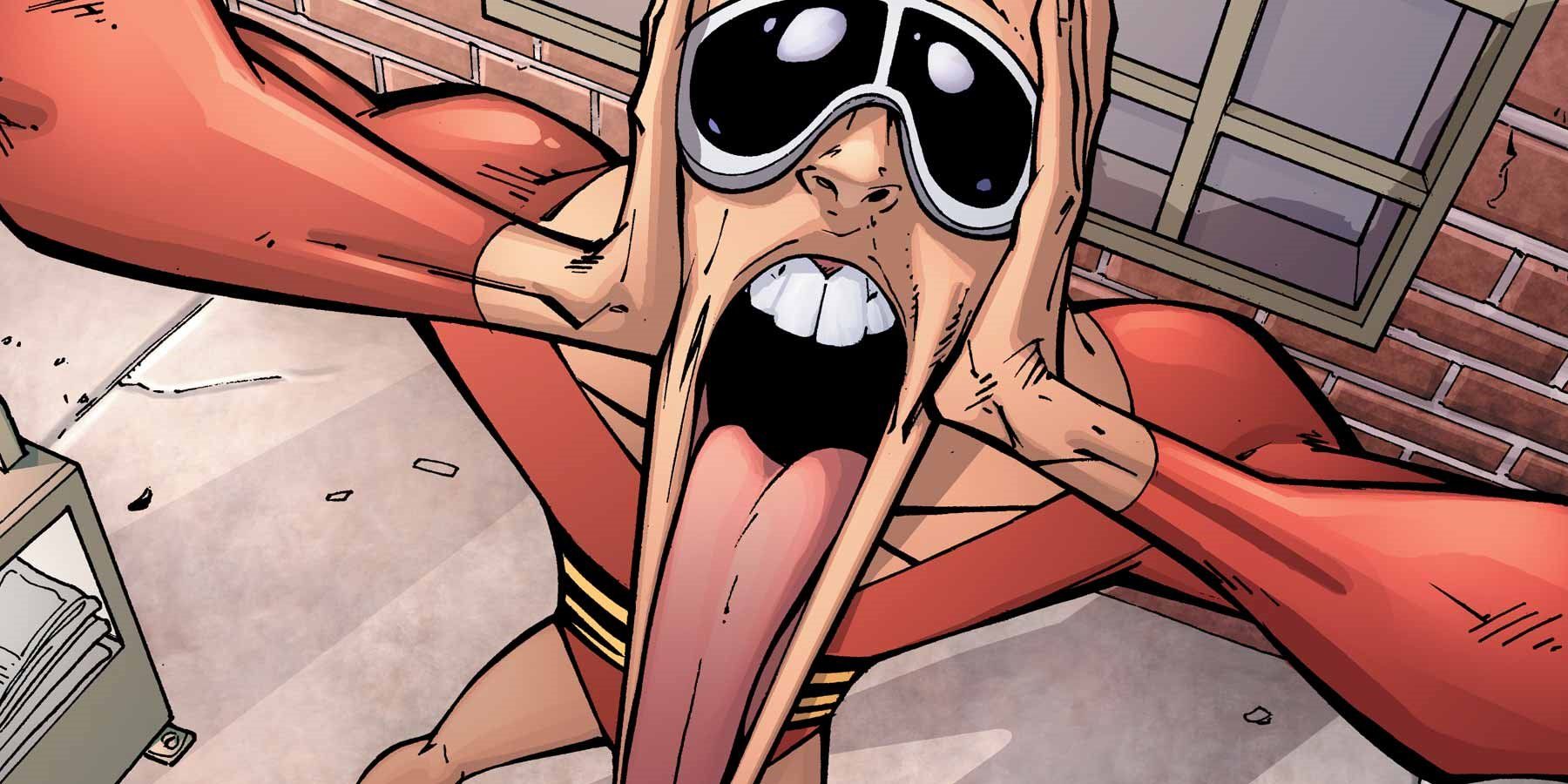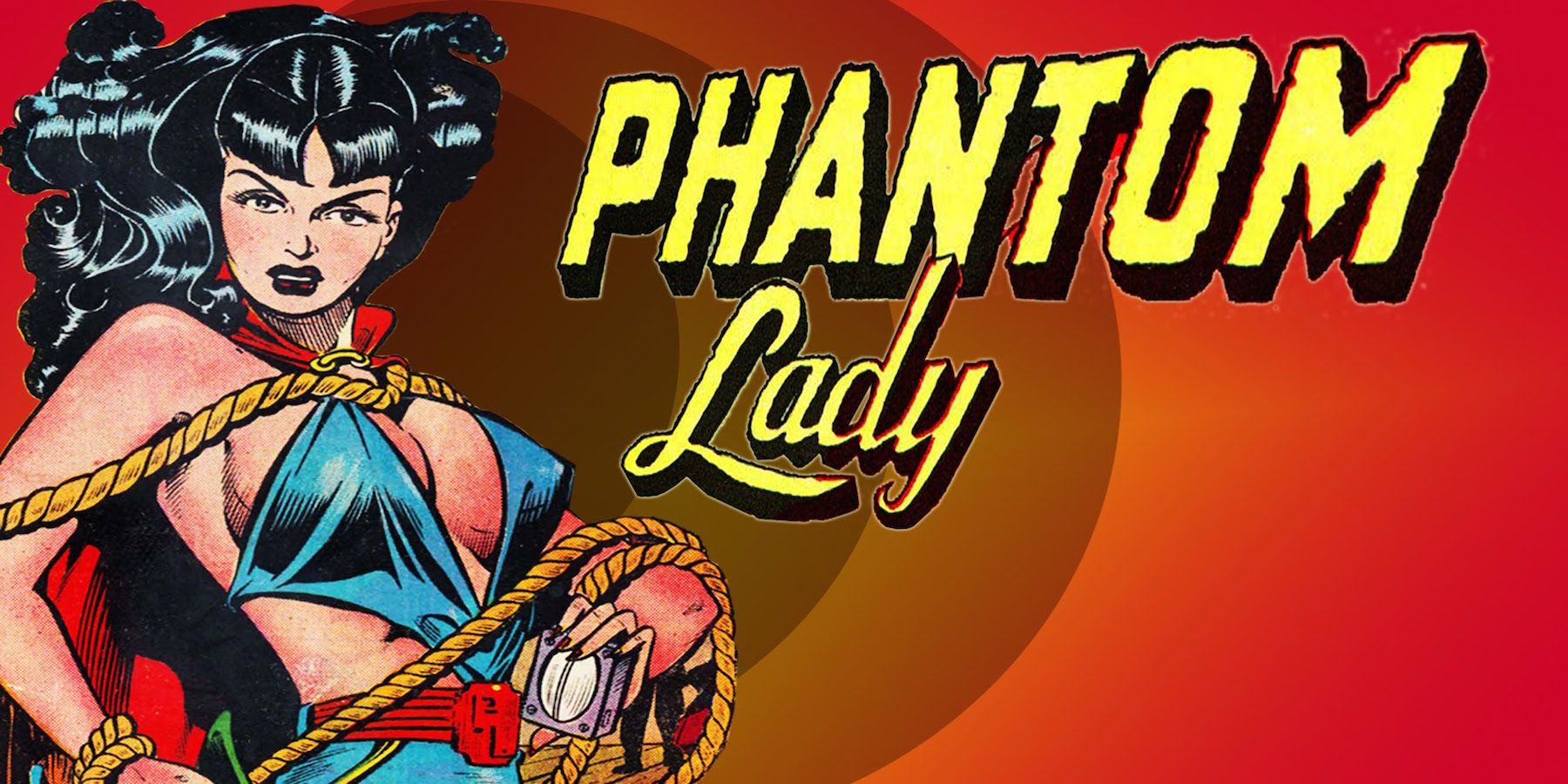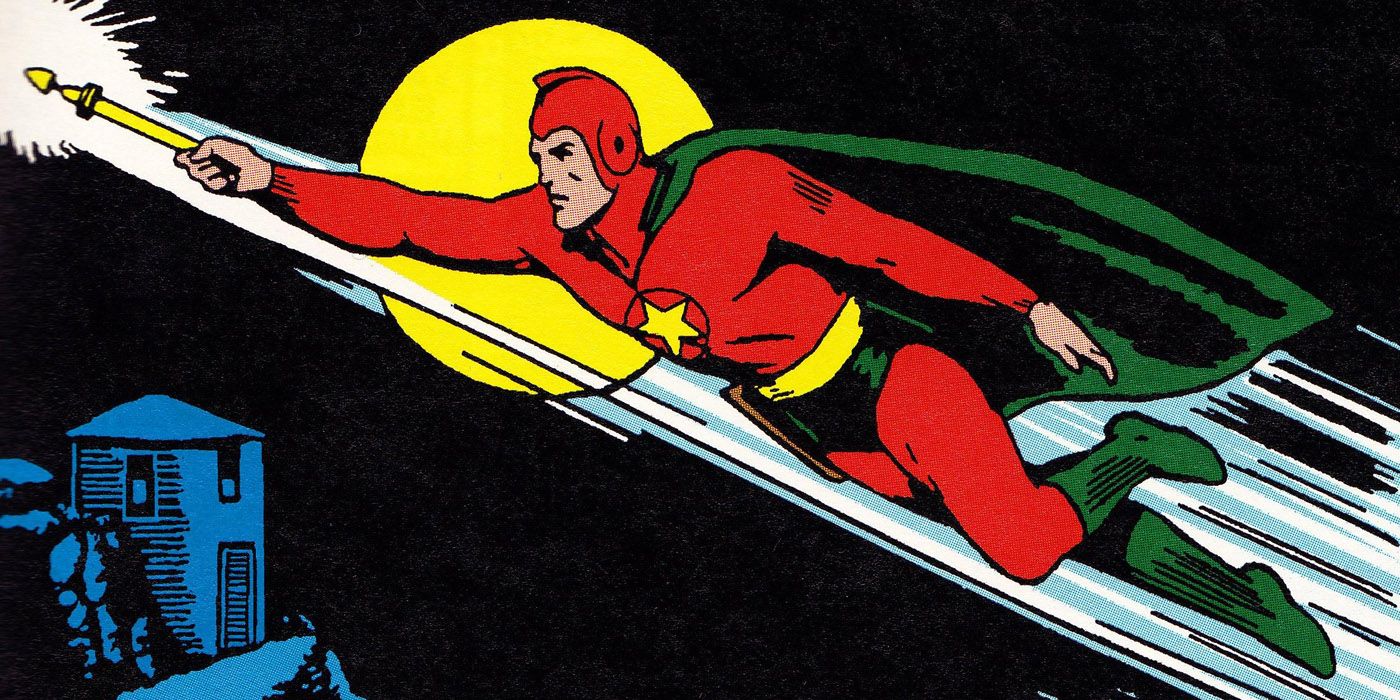It wasn't too long ago that comic book fans were celebrating the milestone 75th anniversaries for Batman and Superman. But with the number of superheroes who made their debuts during the Golden Age of Comics, fans shouldn't be too surprised to learn that there are many more anniversaries coming up (or that have already passed).
Shortly after the advent of the comic book superhero, comic book publishers across the country began creating their own heroes. Today, we associate the majority of these characters with Marvel and DC Comics. But the fact is that a lot of the superheroes we know and love originated with different publishers.
With the year nearing its end, we thought it was time to look back and see which superheroes made their debut way back in 1941. And just so you know, the majority of the characters on this list are DC Comics superheroes. That's because Marvel (or Timely Comics, as it was known back then) apparently took it a bit slow that year.
With that in mind, here are 15 Comic Book Characters That Turn 75 In 2016.
15. Wonder Woman
Wonder Woman made her big screen debut earlier this year in Zack Snyder's Batman v Superman: Dawn of Justice, which was fitting considering that the Amazonian princess made her comic book debut 75 years ago, in 1941. Created by distinguished American psychologist William Moulton Marston, Diana Prince quickly became one of the most iconic superheroes in comic book history.
As a founding member of the Justice League, Wonder Woman possesses a substantial set of superpowers, and she utilizes magic-imbued weapons and armor to aid her in combat, such as her iconic bracelets as well as her sword. Interestingly, Marston is credited with pioneering the systolic blood pressure test used in modern-day polygraph tests, which many comic book historians believe attributed to his inclusion of Wonder Woman's Lasso of Truth.
Over the years, Wonder Woman has become a symbol of feminism, something that was recently made official with the United Nations granting the superhero honorary ambassadorship for the Empowerment of Women and Girls. Perhaps her influence among young girls will be amplified when she appears in her first solo movie in 2017. Regardless, she remains one of the most popular superheroes on the planet, male or female.
14. Captain America
Thanks to the overwhelming success of the Marvel Cinematic Universe, there is virtually no one left on Earth who doesn't know who Captain America is. Created by legendary writer Joe Simon and artist Jack Kirby, Captain America made his debut in 1941 as one of three Timely Comics (the precursor to Marvel Comics) characters -- the other two being Namor, the Sub-Mariner and the Human Torch (not to be confused with the Fantastic Four member).
Just as his name suggests, Captain America wears a costume emblematic of the United States flag, and he carries a nigh-indestructible shield made out of Vibranium-Adamantium alloy. Interestingly, though, while Steve Rogers debuted in Captain America Comics #1, his iconic shield didn't make its debut appearance until the second issue. Captain America was enormously popular during WWII, since he was constantly pitted against the war's Axis Powers. However, as a charter member of The Avengers, Captain America's position in Marvel Comics cemented long ago.
13. Green Arrow
Comic book readers have always known who Green Arrow is, but thanks to his inclusion on Smallville and his headlining of his own series, Arrow, casual fans are now keenly aware of the emerald archer. Created by writer Mort Weisinger and artist George Papp, Oliver Queen, aka the Green Arrow, made his debut in More Fun Comics #73 in November 1941. Despite his popularity, it would be 42 years before Green Arrow received his own self-titled series.
Green Arrow was originally envisioned as an archery-analog of Batman, evident by his comparable storylines to the Dark Knight. However, over the years, he has been the face of liberalism. Although he is one of the more prominent DC Comics superheroes, the Green Arrow hasn't always been a member of the Justice League. With the astounding success of Arrow, as well as the record-breaking Green Arrow: Rebirth comics, it's safe to say that Oliver Queen isn't going anywhere anytime soon.
12. Aquaman
Arthur Curry, aka Aquaman, is an Atlantean-Human hybrid, and is one of the oldest and most prominent characters in the DC Universe. Created by writer Mort Weisinger and artist Paul Norris, Aquaman made his debut in More Fun Comics #73 (the same issue as the Green Arrow) in November 1941. Unlike the Emerald Archer, however, it only took another 21 years before Aquaman received his own self-titled series.
Despite being a founding member of the Justice League, Aquaman is frequently considered one of the weaker members of the superhero team. But if people only knew the superpowers he has and just how strong he actually is, they would have a wildly different opinion of the Atlantean king.
Along with Wonder Woman and a handful of other characters, Aquaman made his DC Extended Universe debut earlier this year in Snyder's Batman v Superman: Dawn of Justice. He will be appearing in Snyder's Justice League next year before headlining his own solo film the following year, which is said to be an adventure on the high seas in the vein of Indiana Jones.
11. Sandy Hawkins
There have been multiple characters who have carried the name Sandman in the DC Universe (not to be confused with Neil Gaiman's Sandman from DC's Vertigo imprint). Of all of them who succeeded Wesley Dodds -- the Golden Age Sandman -- as the character, no one is more deserving of the title than Sandy Hawkins, Dodds' sidekick.
Created by Mort Weisinger and Paul Norris, Sanderson Hawkins, aka Sandy or the Golden Boy, made his debut in Adventure Comics #69 in December 1941 as the nephew of Sandman's girlfriend, Dian Belmont. Following the advent of the Silver Age of Comics, Sandy, along with every other Golden Age character, was put on hiatus. It wasn't until after the conception of the multiverse that Sandy returned in Justice League of America #113 in 1974.
Years later, Sandy would inherit the Sandman name (though he called himself Sand instead) and become the chairman of the Justice Society of America.
10. Doctor Mid-Nite
Doctor Mid-Nite is another heroic mantle that's been passed down to several characters over the years, with one incarnation undertaking the heterographic name Doctor Midnight. For the purposes of this list, though, we'll focus on the first character to assume the title Doctor Mid-Nite: Charles McNider. Created by Charles Reizenstein and Stanley Josephs Aschmeier, Charles McNider made his debut in All-America Comics in #25 in December 1941.
The reason behind the name is that in order to see in virtual darkness, all three Doctor Mid-Nite characters sacrifice the ability to see in sunlight, which is perhaps the most important aspect of the character. Preceding Daredevil by more than 20 years, Doctor Mid-Nite is generally believed to have been the first superhero to display a physical disability. In this case, blindness. Maybe that's why two of the three versions of the character have trained owls as their sidekicks.
9. Archie Andrews
When it comes to the Golden Age of Comics, sometimes it can be easy to forget that not all comic book characters are superheroes -- and that not all characters come from the two behemoth publishers, DC and Marvel Comics. Archie Andrews, created by artist Bob Montana, made his debut in Pep Comics #22 in December 1941, by publisher MLJ Magazines.
As a result of the overwhelming popularity of the Archie character, the publisher eventually rebranded as Archie Comics in 1946. Despite still being named Archie Comics, the publisher killed off Archie Andrews in 2014, 73 years after his debut.
As for non-superhero comic book characters, there is probably no one more widely-known than Archie Andrews, who received several television, film, and video game adaptations over the years. In fact, he will be appearing in The CW's forthcoming Riverdale series, from Archie Comics CCO Roberto Aguirre-Sacasa and executive producer Greg Berlanti, in which Archie will be played by K.J. Apa.
8. Penguin
Superheroes aren't the only comic book characters who made their debut in 1941. Since Batman was created two years prior, a substantial number of the Dark Knight's most enduring enemies made their debut within the following few years -- and Penguin was one of them.
Created by legendary Batman creators Bob Kane and Bill Finger, Oswald Cobblepot, aka the Penguin, first appeared in Detective Comics #58 in December 1941, fighting none other than the Caped Crusader. Bizarrely characterized as being a short, stout man who uses an umbrella as his favored weapon, Penguin is a criminal mastermind. He likens himself a gentleman's thief, and he controls the criminal underworld of Gotham out of his nightclub, the Iceberg Lounge, without getting his hands dirty (for the most part).
What makes Penguin an interesting supervillain, and a major player in Batman's rogues gallery, is that he is completely sane. Batman tolerates Penguin so long as the portly villain provides the Dark Knight with information on crime in Gotham. That's not to say the two don't clash from time-to-time, but they certainly aren't at each others throats as often as Bats and the Joker are.
7. Whizzer
Robert Frank, aka the Whizzer, is one of only a few characters on this list to be published by Marvel that debuted 75 years ago. However, like many other characters on this list, Whizzer is a name that has been used by multiple superheroes over the years: Robert Frank, James Sanders, and Stanley Stewart all adapted the persona at one point or another.
Created by penciler Al Avison (the writer is, unfortunately, unknown to the public), the original Whizzer made his debut appearance in USA Comics #1, published by Timely Comics, in August 1941. He was one of the publisher's very first speedsters, and he used his superhuman speed to fight crime before accepting Bucky Barnes' invitation to join the Invaders team.
After fighting evil for over forty years, Robert Frank was eventually killed off in Vision and the Scarlet Witch #2 in December 1982. However, he did so right after learning that Quicksilver and Scarlet Witch weren't, in fact, his children.
6. Star-Spangled Kid
The original Star-Spangled Kid, Sylvester Pemberton, created by Superman creator Jerry Siegel as well as Hal Sherman, made his debut in Star-Spangled Comics #1 in September 1941. As a member of the Justice Society of America and the All-Star Squadron, Pemberton has been heavily featured throughout DC Comics history, though never in his own series.
The Star-Spangled Kid mantle has been passed down to multiple characters over the years, with the second incarnation being the most notable to modern audiences. Eleven years after Pemberton was killed off, DC Comics president Geoff Johns revived the Star-Spangled Kid by giving the name to a then-newly created character, Courtney Whitmore, whom Johns modeled after his sister (a victim of the TWA Flight 800 crash in 1996).
Despite there technically being a third Star-Spangled Kid -- Miss Martian once shapeshifted into the superhero -- the modern-day incarnation is still Whitmore, who can be seen starring on the second season of The CW's Legends of Tomorrow TV series, where she's played by Sarah Grey.
5. Johnny Quick
When discussing members of The Flash family, we're usually talking about speedsters associated with DC's first Flash, Barry Allen. But the thing is, he isn't the DC Universe's first speedster. Before the establishment of the Speed Force, there were multiple superheroes who possessed superhuman speed during the Golden Age of Comics: the Golden Age Flash, Jay Garrick, and Johnny Chambers, aka Johnny Quick.
The majority of modern-day comic book readers may associate the name Johnny Quick with the Earth-Three supervillain of the same name, who happens to be the evil counterpart of The Flash, as well as a member of the Crime Syndicate of America. However, the Golden Age superhero Johnny Quick, who made his debut in More Fun Comics #71 in September 1941, has been a faithful member of the All-Star Squadron for decades. Interestingly though, unlike the majority of other Golden Age superheroes, it's unclear if Johnny Quick was ever an official member of the Justice Society of America, despite having fought alongside the JSA on several occasions.
4. Hawkgirl
Sure, most people look to Wonder Woman as the foundation of superheroines, but the fact is, Hawkgirl has been around just as long as the Amazonian princess. While the character Shiera Sanders Hall made her debut in Flash Comics #1 in January 1940, she didn't become the superhero Hawkgirl until the following year, in All Star Comics #5.
As with many Golden Age characters, Hawkgirl has received multiple origin stories over the years, as well as multiple incarnations. However, the way in which the Hawkgirl name carries on is rather unique. The most recent version of the character, Kendra Saunders, became Hawkgirl only after she died. Once her soul left her body, the soul of the original Hawkgirl, Shiera Sanders Hall, entered it (in what's referred to as a walk-in), thereby allowing the publisher to continue the original Hawkgirl's story with a new host, so to speak.
As a member of both the Justice League and Justice Society of America, Hawkgirl has appeared in numerous comics over the years, as well as in several animated and live-action adaptations -- including the expansive Arrowverse.
3. Plastic Man
As one of Quality Comics' flagship characters during the Golden Age of Comics, Patrick "Eel" O'Brian became one of the first mainstream superheroes to prominently feature humor in his stories. What can you expect from a character whose sidekick is named Woozy Winks? Furthermore, because of his ability to stretch to unbelievable lengths, O'Brian adopted the superhero name Plastic Man (not to be confused with the DC Comics original character, Elongated Man).
Created by Jack Cole, Plastic Man made his debut in Police Comics #1 in August 1941. It wasn't until DC Comics acquired the publisher's catalog that the character was introduced into the main DC Universe continuity. Additionally, although there have been several Marvel Comics characters whose creators were inspired by past superheroes, Plastic Man is one of the few characters who has been openly credited with being an inspiration. In this case, Stan Lee credited Plastic Man with being the influence for Mr. Fantastic's stretchy powers.
2. Phantom Lady
Along with Hawkgirl and Wonder Woman, Sandra Knight, aka the Phantom Lady, is one of the first female superheroes to have ever existed, having made her debut in Police Comics #1 in August 1941 (the same issue as the aforementioned Plastic Man). Despite being a notable member in the Golden Age of Comics as well as in the DC Universe, Phantom Lady has never been a part of any prominent superhero team, with the exception of the All-Star Squadron.
Phantom Lady is one of the few characters to transfer through multiple comic book publishers over the years: beginning with Quality Comics, she didn't end up joining the DC Universe until the '70s. In fact, she was one of the last Charlton Comics characters to be relaunched within the DC Universe. After briefly rebooting Sandra Knight, DC Comics eventually introduced new incarnations of Phantom Lady.
Fun fact: the Watchmen character, Silk Spectre, is loosely based on the Phantom Lady.
1. Starman
A genius-level inventor, Ted Knight is one of a handful of comic book characters to become superheroes as a result of advanced technological inventions. Assuming the name Starman, Ted Knight -- created by Jack Burnley, Whit Ellsworth, Murray Boltinoff, Jack Schiff, Mort Weisinger, and Bernie Breslauer -- made his debut appearance in Adventure Comics #61 in April 1941.
As with many other Golden Age DC Comics characters, Starman is a member of the Justice Society of America and the All-Star Squadron. He's even worked alongside the FBI from time to time. Following the landmark Crisis on Infinite Earths crossover event, Ted Knight's origin was retconned and replaced with one that involves Phantom Lady (who was now established as being his cousin) aiding him in acquiring the necessary technology to become Starman.
The publisher eventually killed off Starman after 59 years in Starman Vol. 2 #72 in December 2000 by having him die in a fight with his archenemy, the Mist. For a character as old as Starman, that seems like an ideal send-off to us.
---
What other prominent comic characters made their debut 75 years ago? Let us know in the comments.

